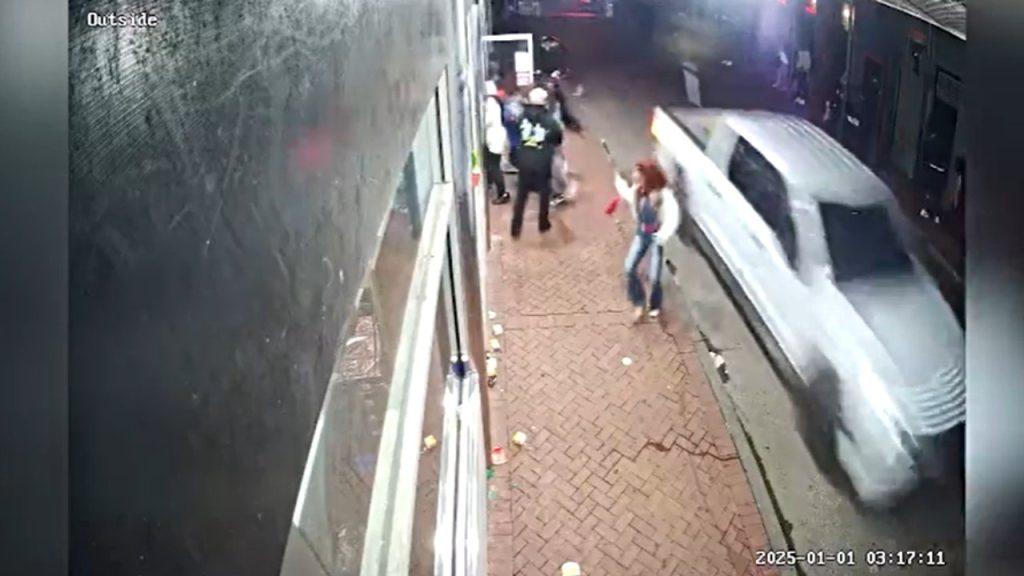The aftermath of the devastating New Year’s terrorist attack on Bourbon Street in New Orleans has spurred legal action against the city and its police department. Dozens of victims and their families are seeking redress for the tragic loss of 14 lives and the injuries sustained by many others when Shamsud-Din Jabbar, a Texas resident, plowed a Ford F-150 through the celebratory crowds in the early hours of January 1st. The attack, which ended in a shootout with police resulting in Jabbar’s death, has raised serious questions about the adequacy of security measures in place to protect the public.
One lawsuit, filed by Morris Bart, LLC on behalf of seven victims, alleges negligence on the part of the City of New Orleans, Hard Rock Construction, and engineering firm Mott MacDonald, LLC. The suit contends that these entities failed to implement sufficient security measures that could have prevented the attack. Specifically, the lawsuit points to a report by Mott MacDonald, produced eight months prior to the attack, which outlined a scenario eerily similar to the actual events, involving a Ford F-150 turning onto Bourbon Street from Canal Street. The lawsuit argues that had Mott MacDonald’s engineering services adequately addressed known threats, Jabbar’s access to Bourbon Street would have been blocked entirely. The firm’s alleged failure to act on this identified vulnerability forms the crux of the plaintiffs’ claim.
A second lawsuit, representing at least two dozen victims, is also being prepared against the city and the New Orleans Police Department. This lawsuit, spearheaded by Maples Connick, LLC in partnership with the mass disaster law firm Romanucci & Blandin, focuses on the alleged failure of city officials to ensure public safety despite being aware of Bourbon Street’s vulnerabilities. The legal teams involved in this suit are conducting a thorough investigation, emphasizing the need for accountability for the city’s alleged negligence in protecting residents and visitors. They assert a breach of public trust, arguing that the attack was both predictable and preventable, given the existing knowledge of potential security risks.
Louisiana Attorney General Liz Murrill has initiated an independent investigation into the potential security lapses that may have contributed to the attack. Recognizing the frequent large-scale events hosted in New Orleans, including New Year’s Eve, the Sugar Bowl, Mardi Gras, and the Super Bowl, Murrill aims to evaluate the city’s infrastructure and its ability to handle the threats it faces. Her review will encompass an examination of the pressures on the city’s resources, the roles played by various agencies, and the adequacy of existing security measures. Murrill’s objective is to understand the systemic issues that need to be addressed to prevent future tragedies and to ensure that security measures are commensurate with the city’s unique vulnerabilities.
At the heart of the security concerns lies the issue of the bollards on Bourbon Street. These protective barriers were undergoing replacement at the time of the attack, a process that began in November. A temporary barrier was installed where Bourbon Street intersects with Canal Street, but reports suggest it was improperly positioned, effectively rendering it useless in preventing vehicle access. The inadequacy of this temporary measure, combined with the ongoing replacement of the permanent bollards, left Bourbon Street tragically vulnerable on New Year’s Eve. This lapse in security, amidst a major public event, has raised questions about the city’s preparedness and its adherence to safety protocols.
The inadequacy of the bollards and the broader security concerns were not entirely unforeseen. A 2017 report, part of a $2.3 billion infrastructure project, highlighted the French Quarter, and particularly Bourbon Street, as a potential target for mass casualty incidents, including terrorism. The report specifically referenced attacks in Nice, London, and New York City’s Times Square, emphasizing the importance of bollards in mitigating such threats. Furthermore, a confidential 2019 report by security firm Interfor International identified Bourbon Street as the “most high-profile target” for a terrorist attack in New Orleans, explicitly stating that the existing bollard system was ineffective. Despite these warnings, the city’s response appears to have been insufficient, leaving the city vulnerable.
The 2019 Interfor International report, which recommended immediate improvement to the bollard system, seemingly went unheeded by city officials. Security experts have also weighed in, asserting that the bollards being installed, even if properly functioning, lacked the necessary crash ratings to stop a vehicle like the F-150 Jabbar used in his attack. Attorney General Murrill has confirmed her awareness of the 2019 report and intends to review it as part of her investigation. The FBI’s ongoing investigation has revealed that Jabbar was motivated by ISIS extremism and had made previous visits to New Orleans, as well as Cairo, Egypt, and Toronto, Canada. Although he appears to have acted alone, authorities continue to investigate the possibility of accomplices. The legal actions being pursued by the victims and their families seek to hold the city accountable for its alleged negligence in failing to address known security vulnerabilities, ultimately contributing to the tragic loss of life and widespread suffering.

